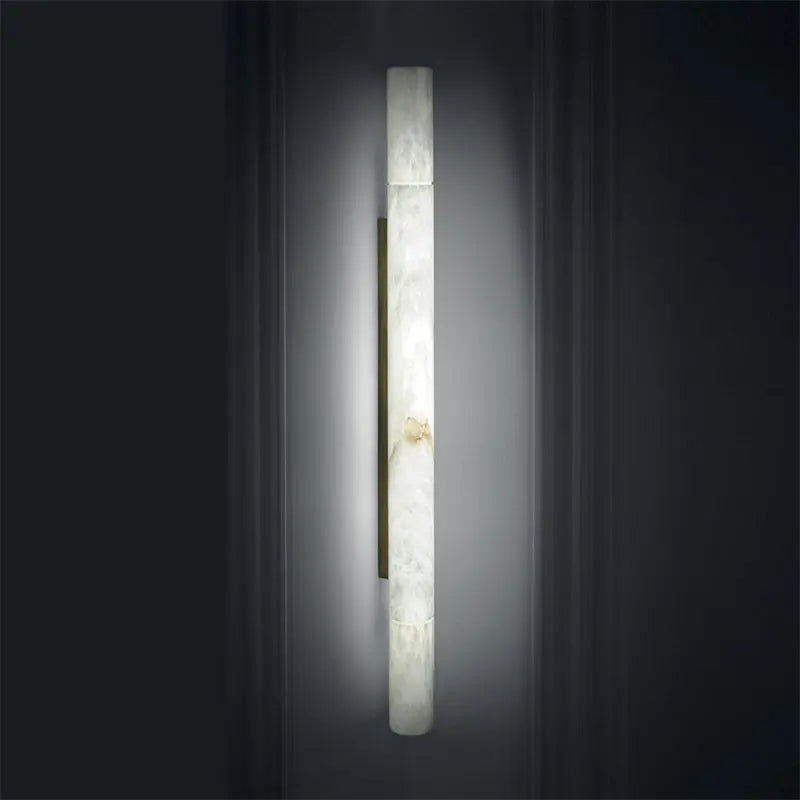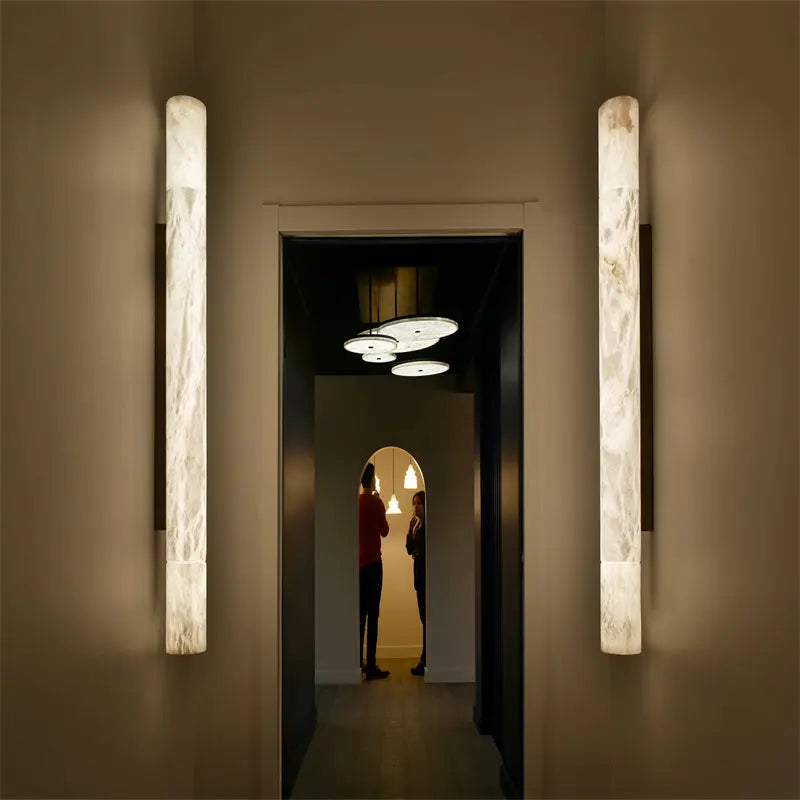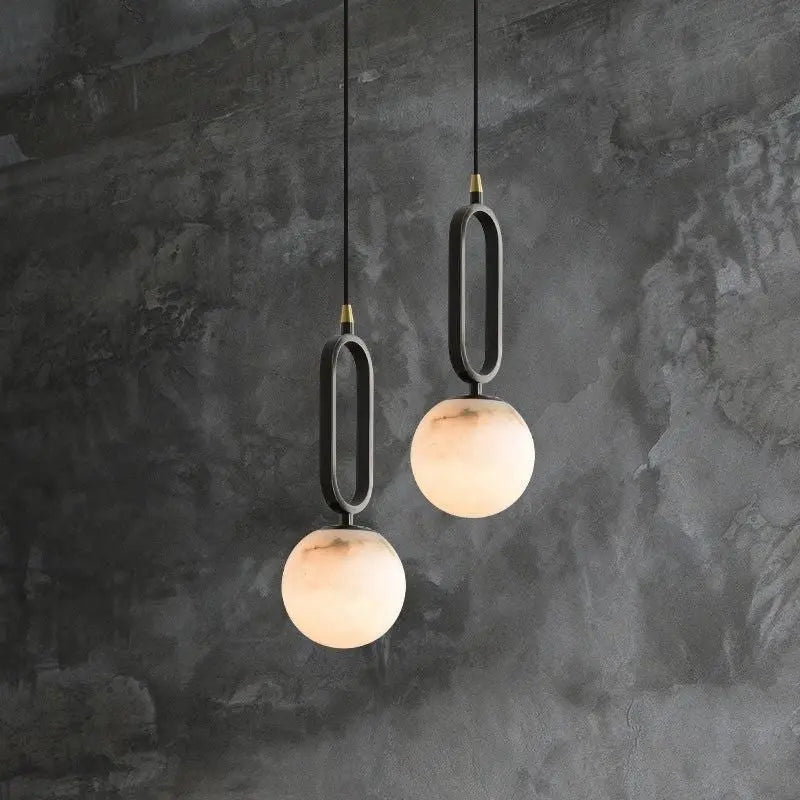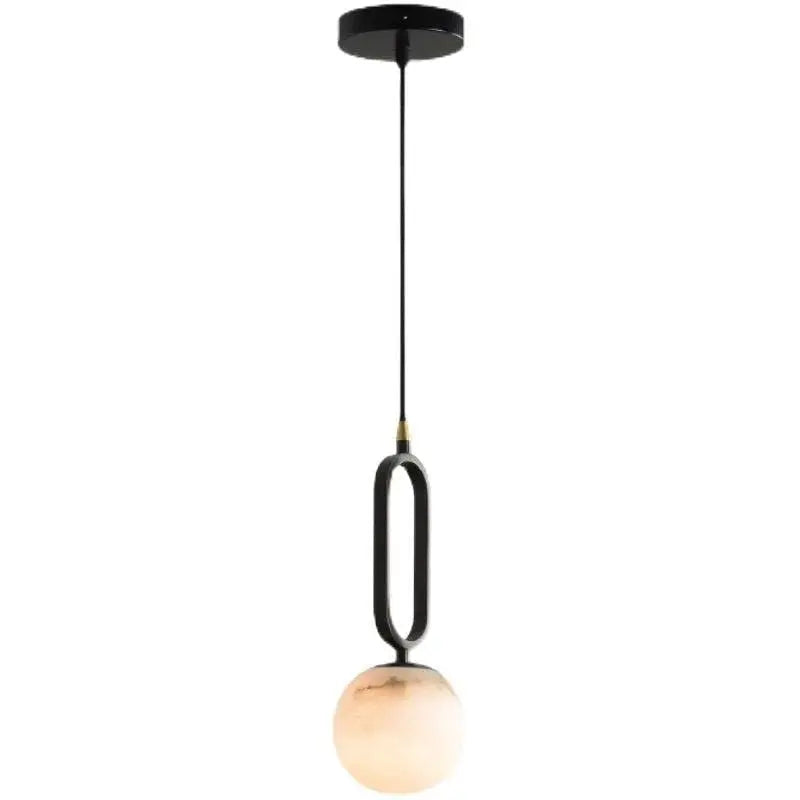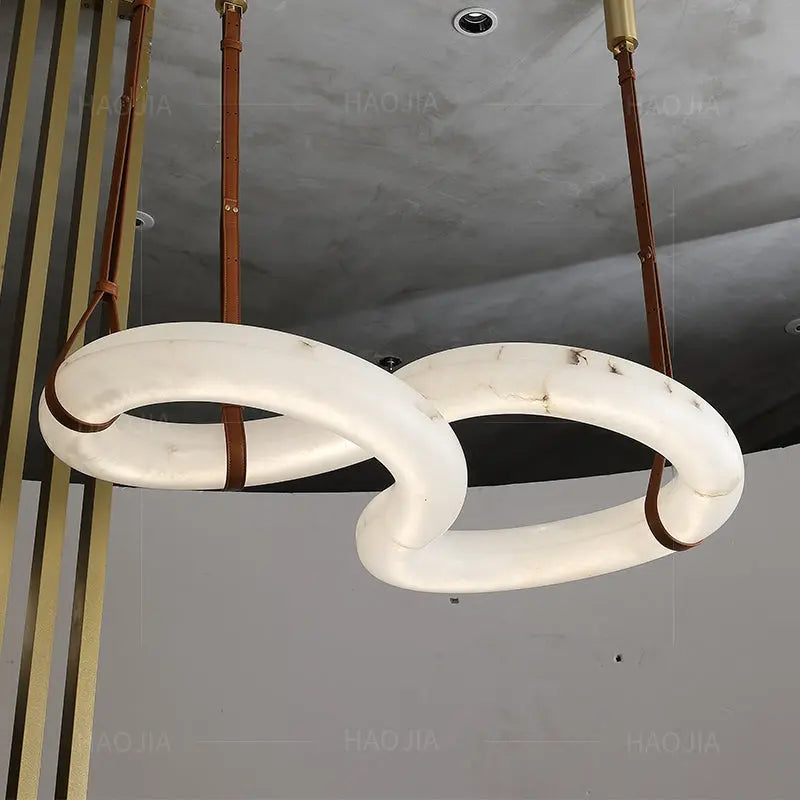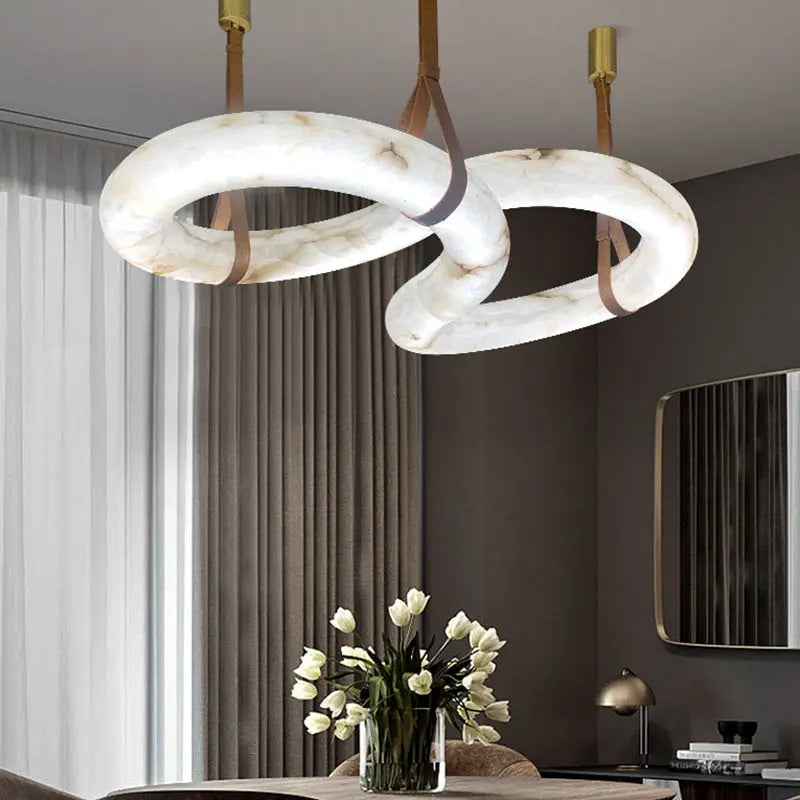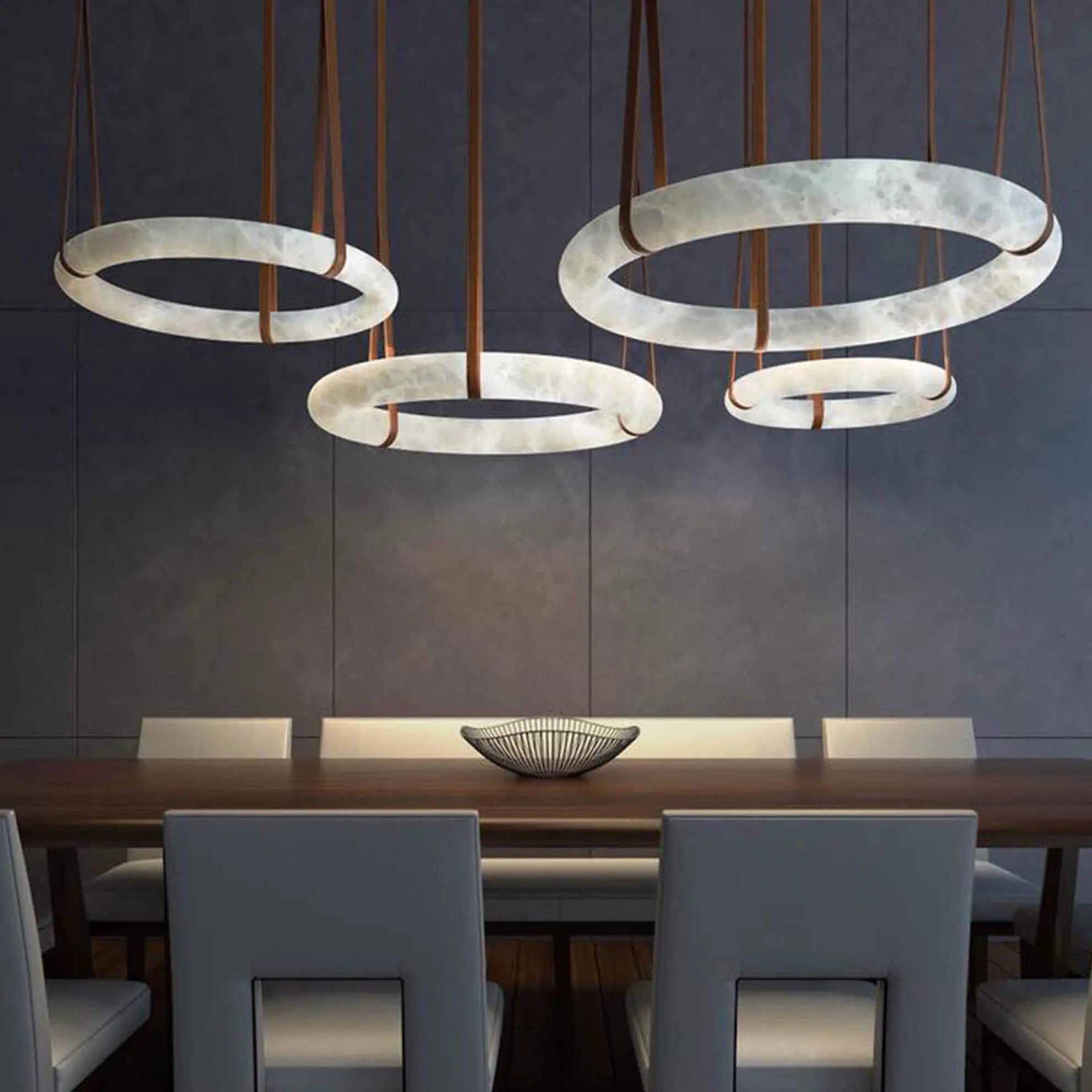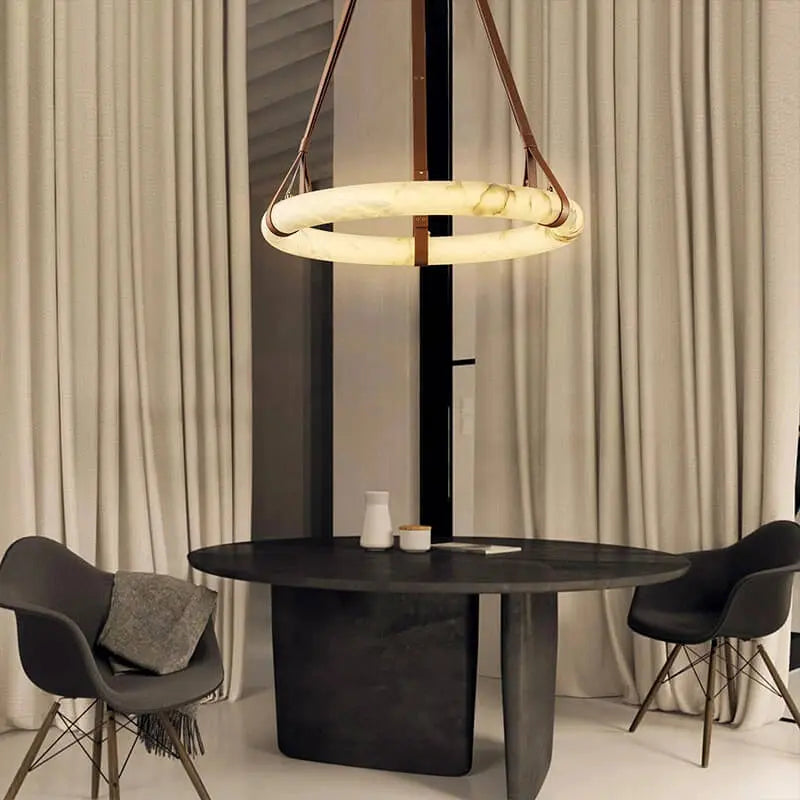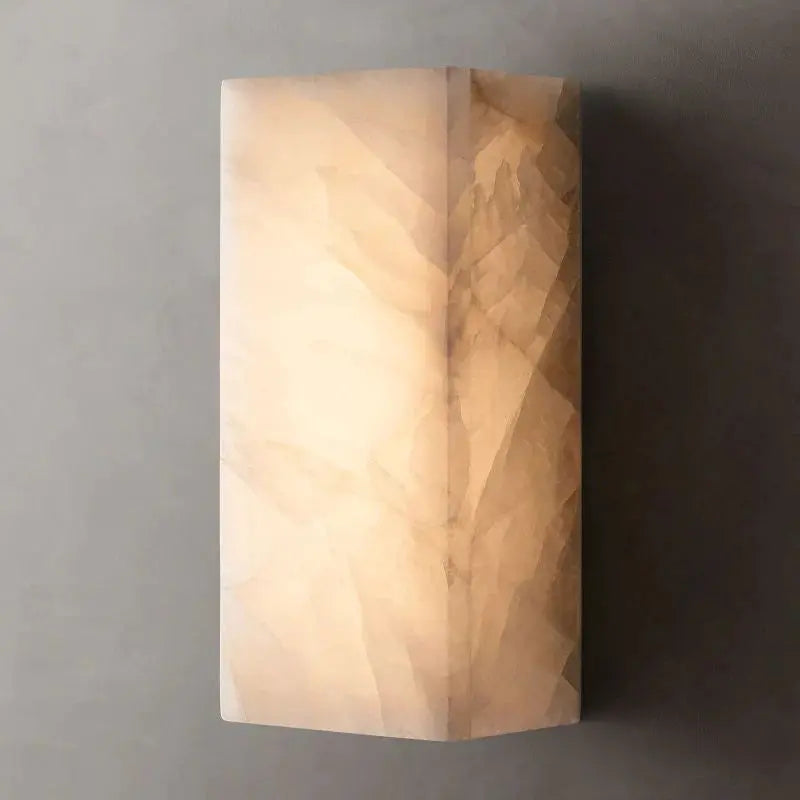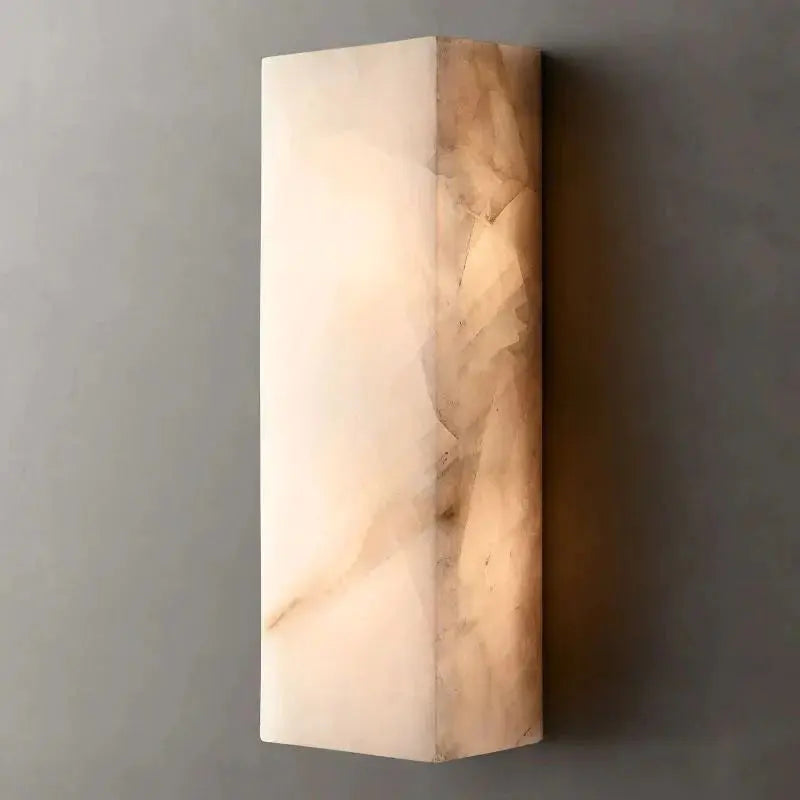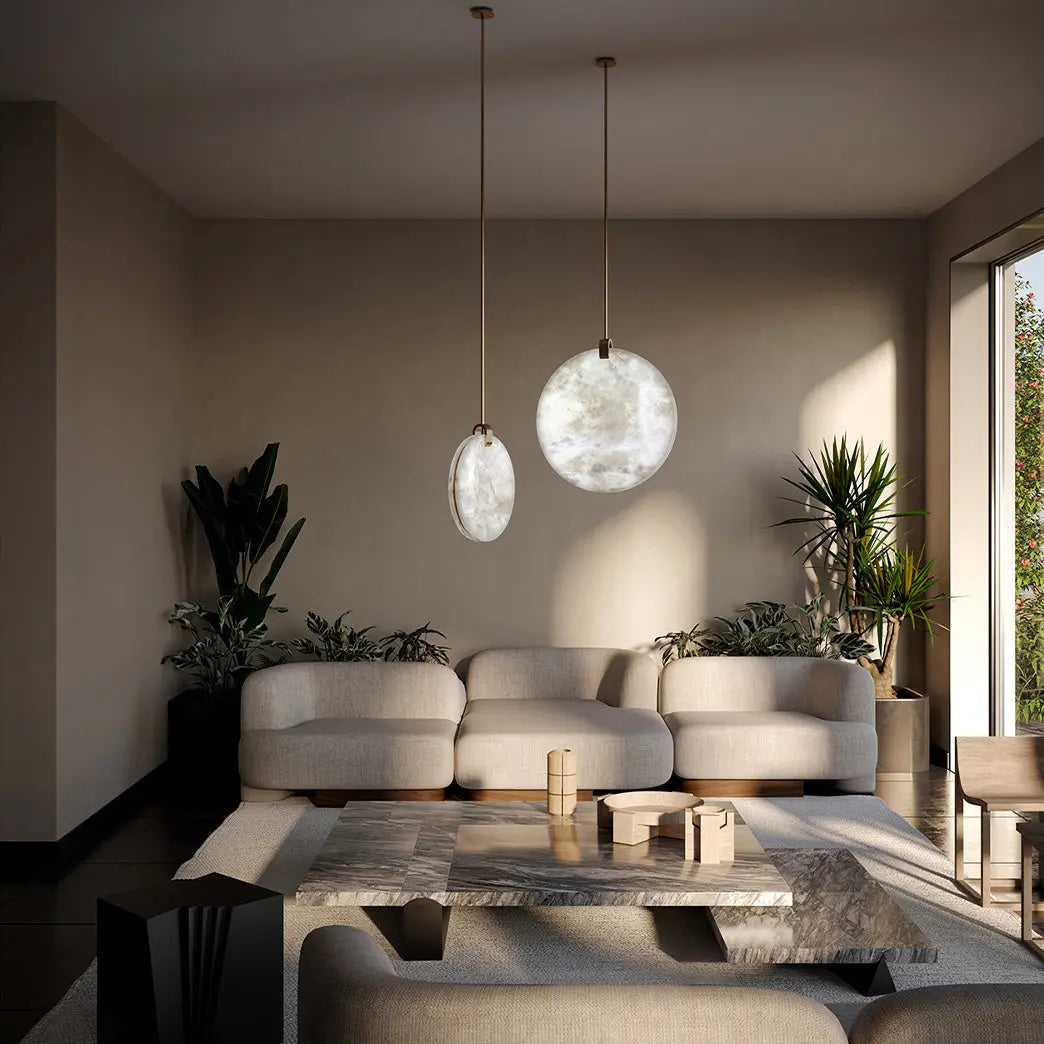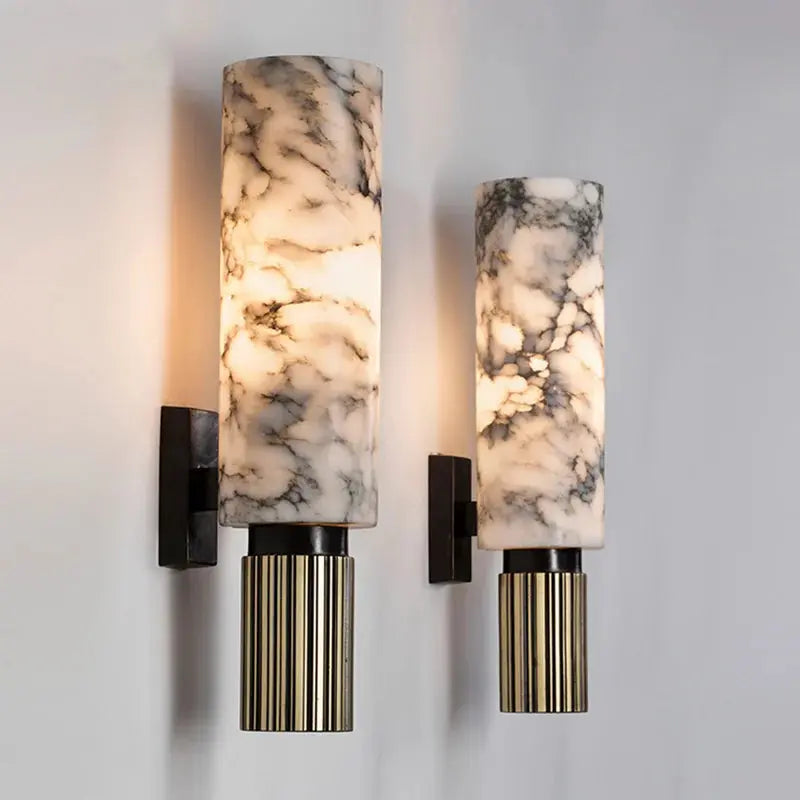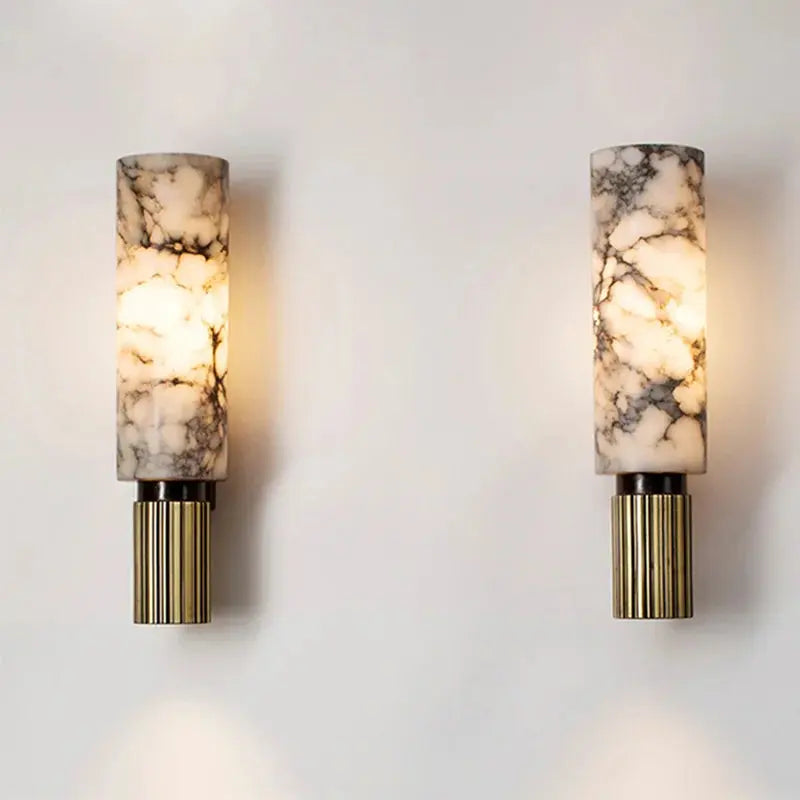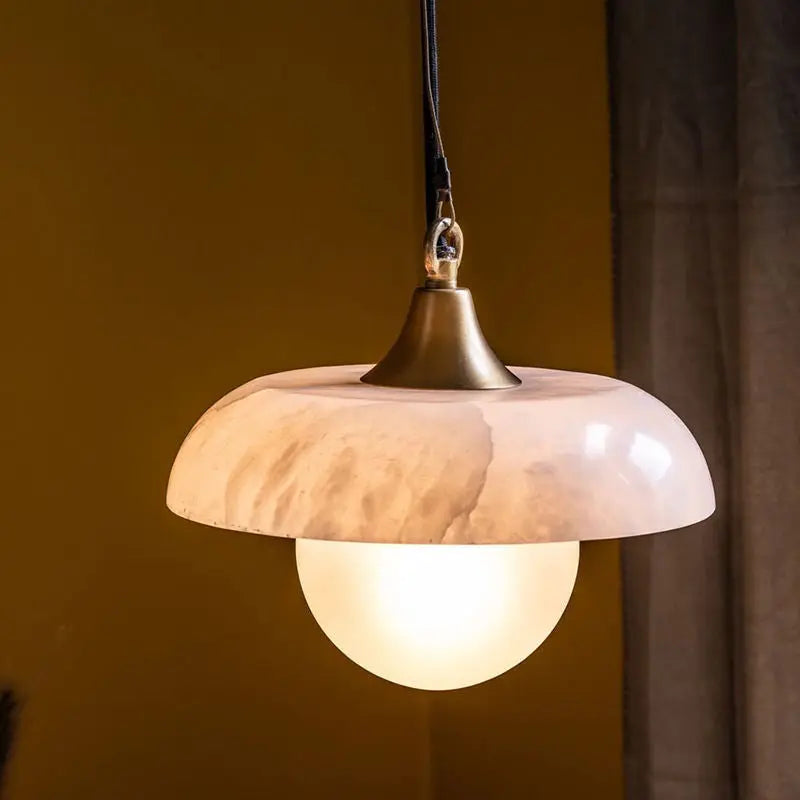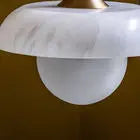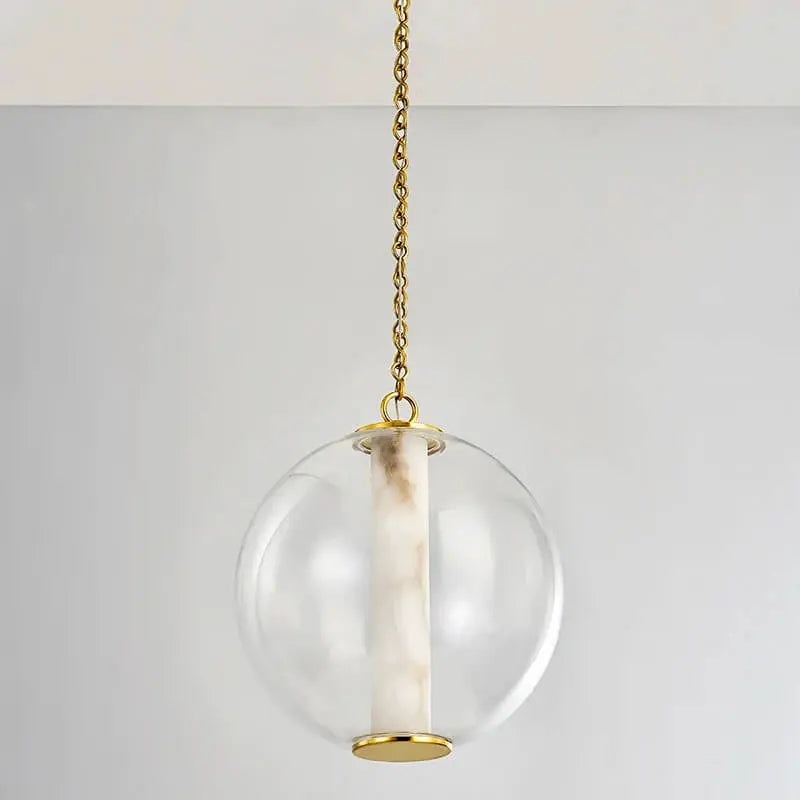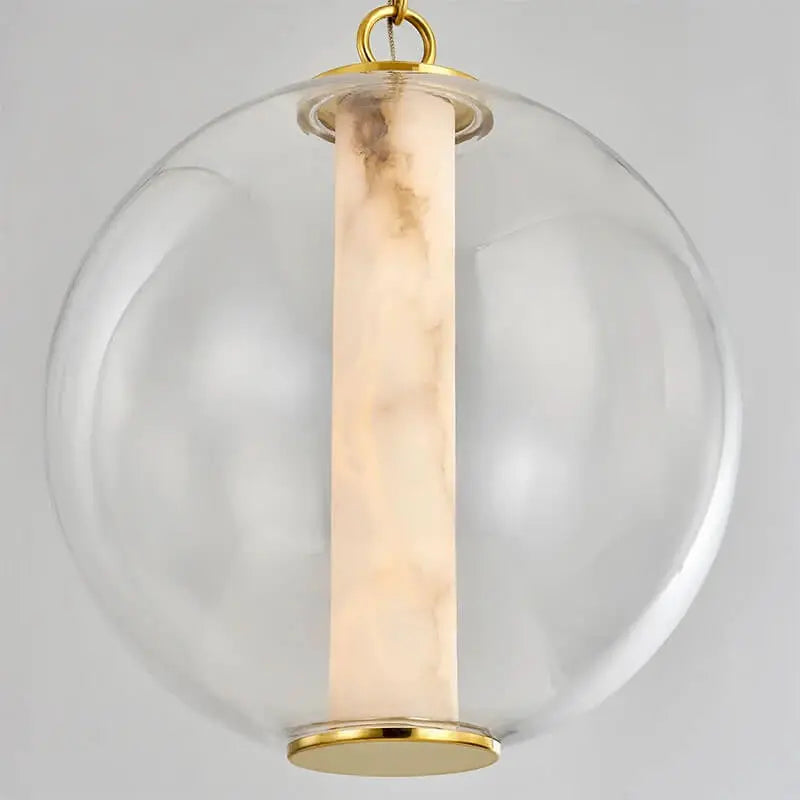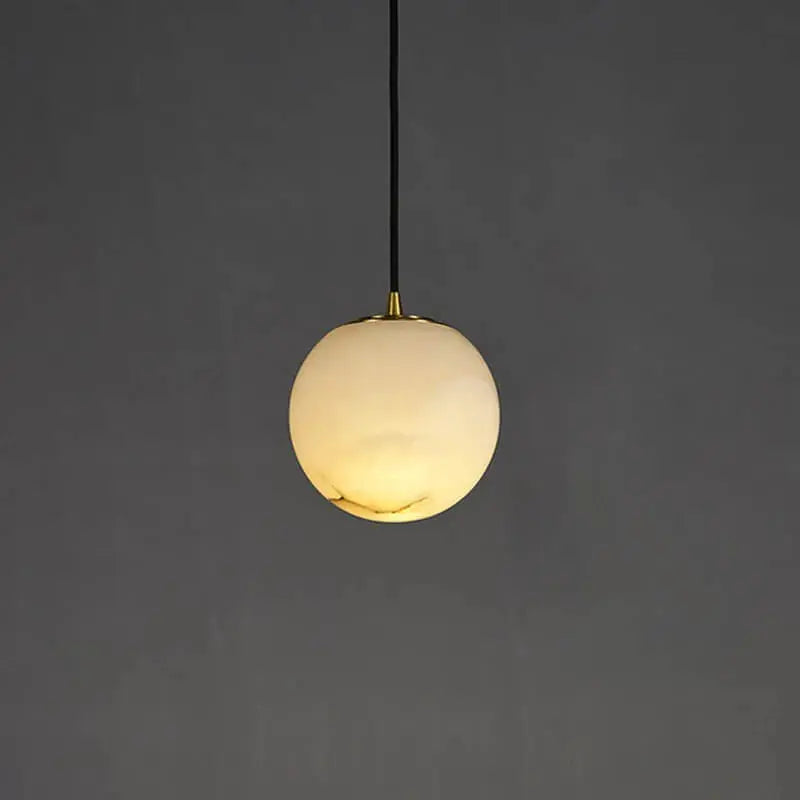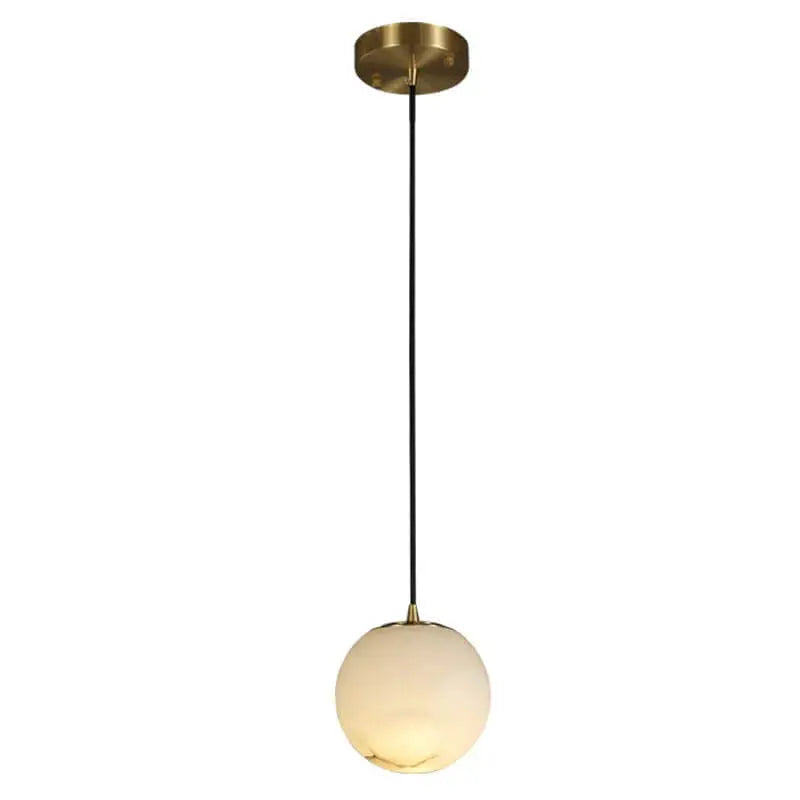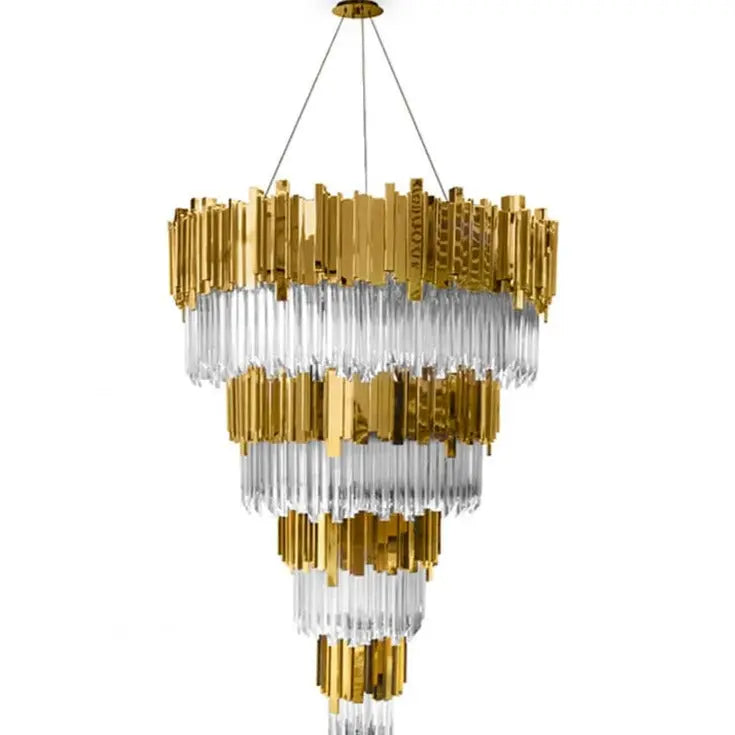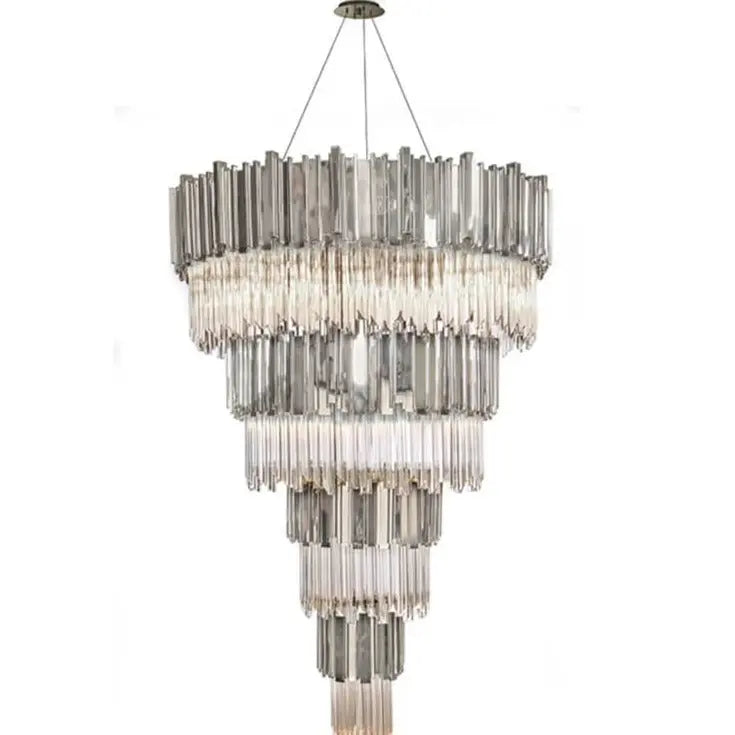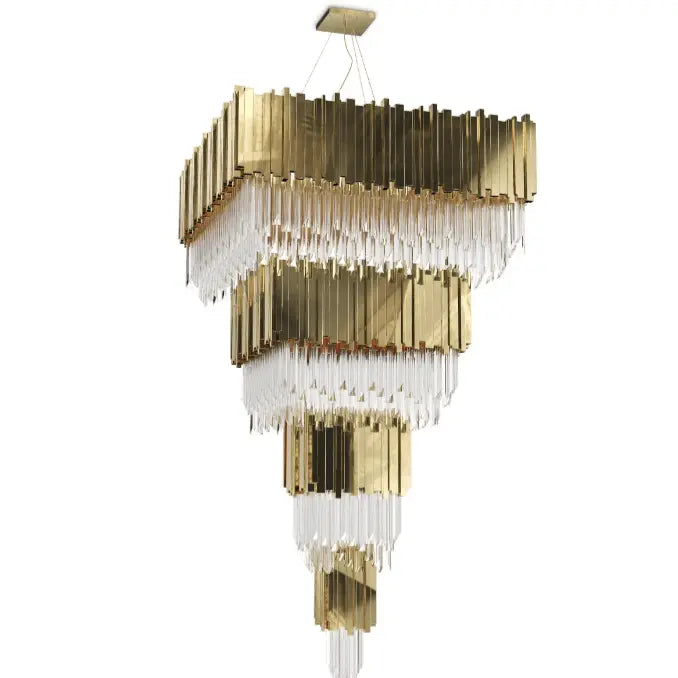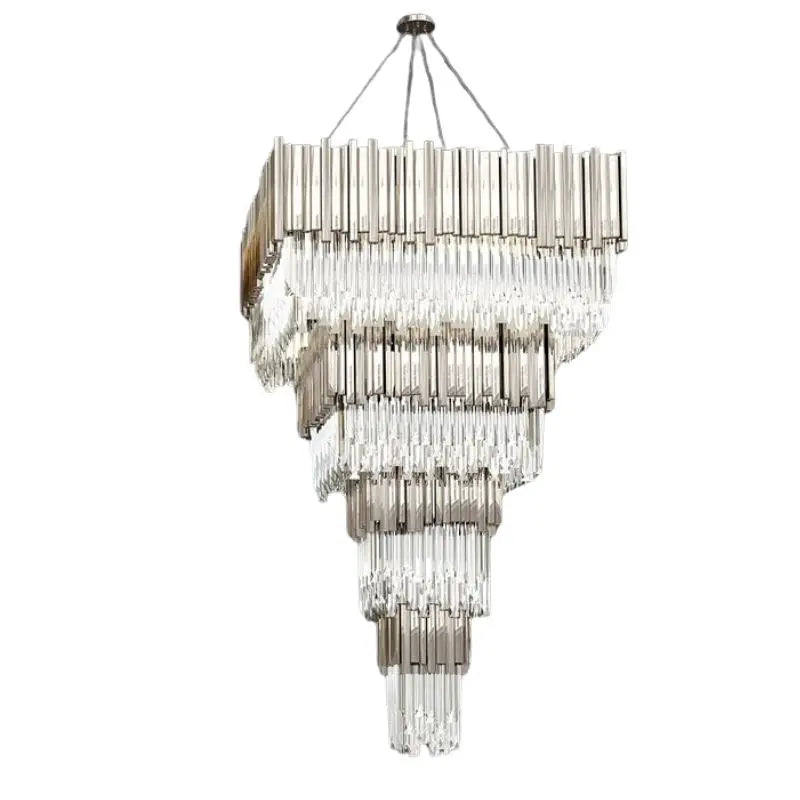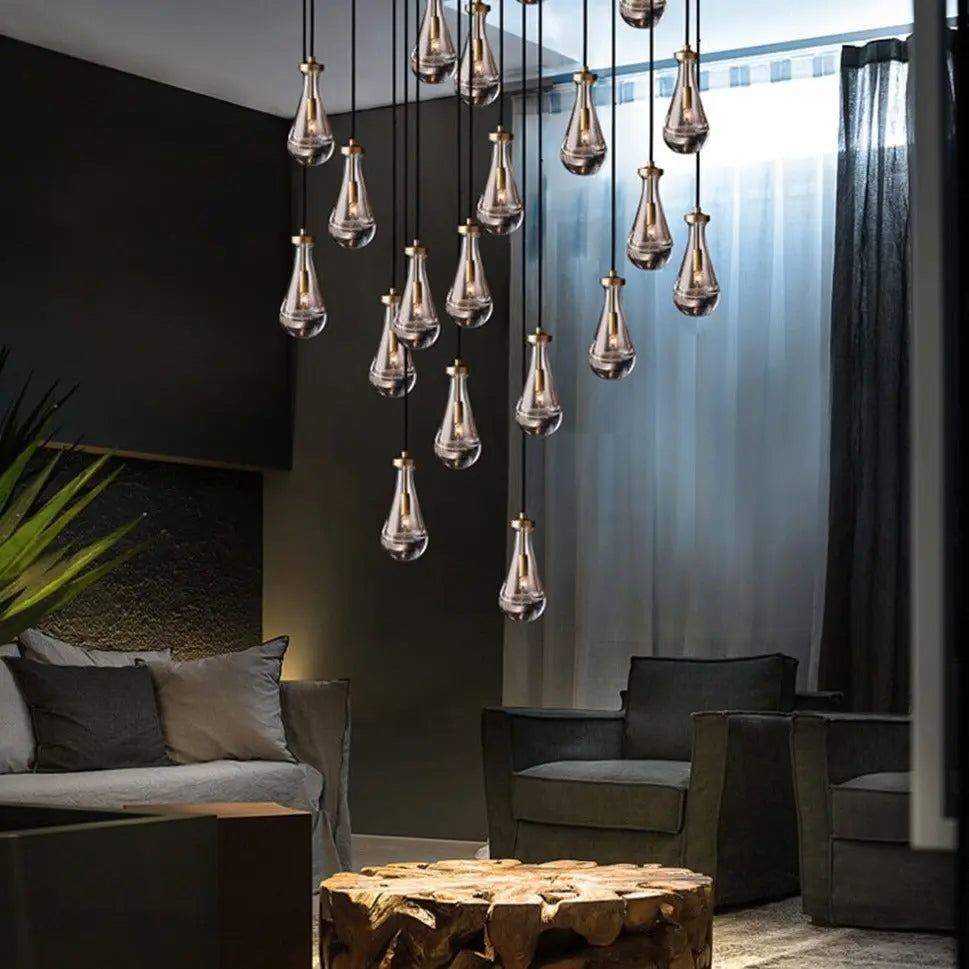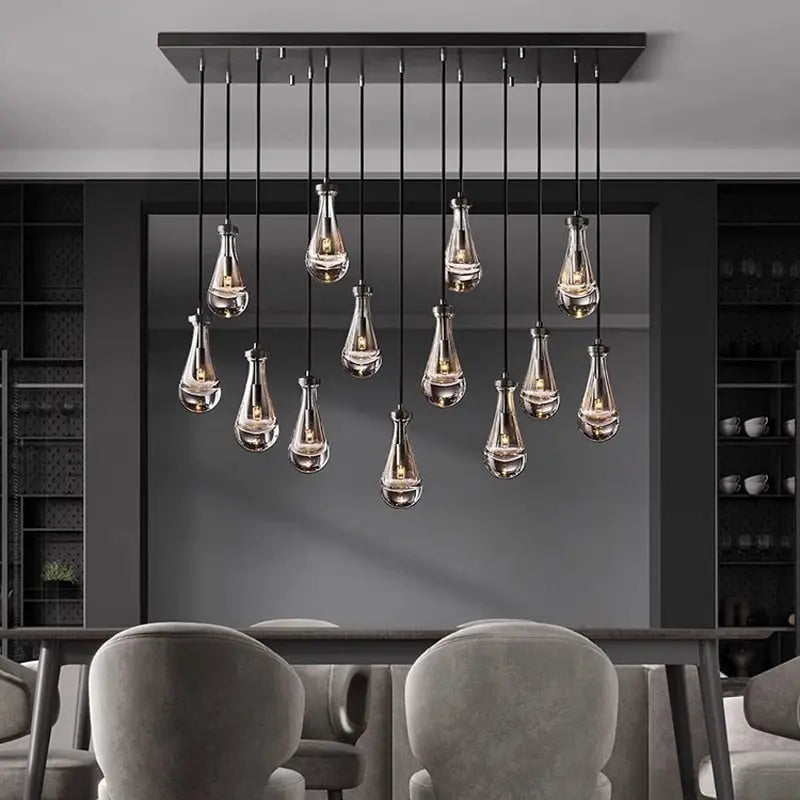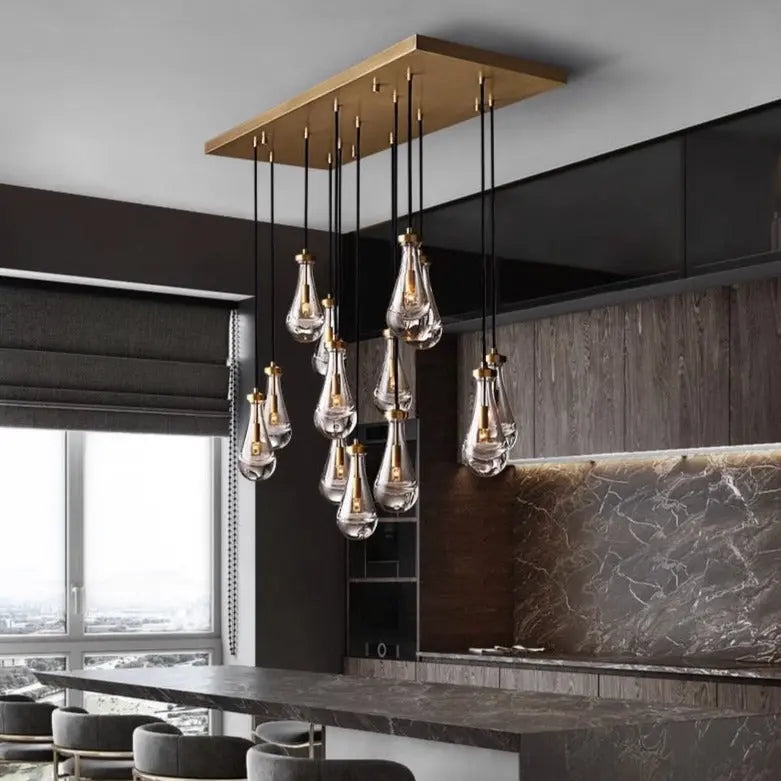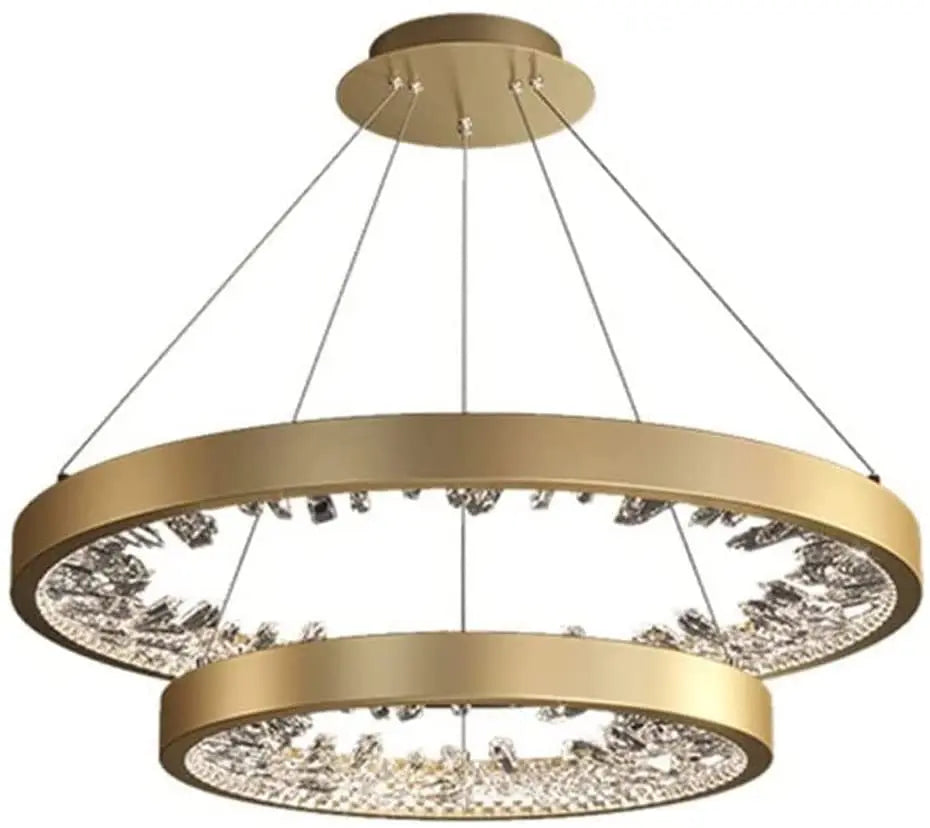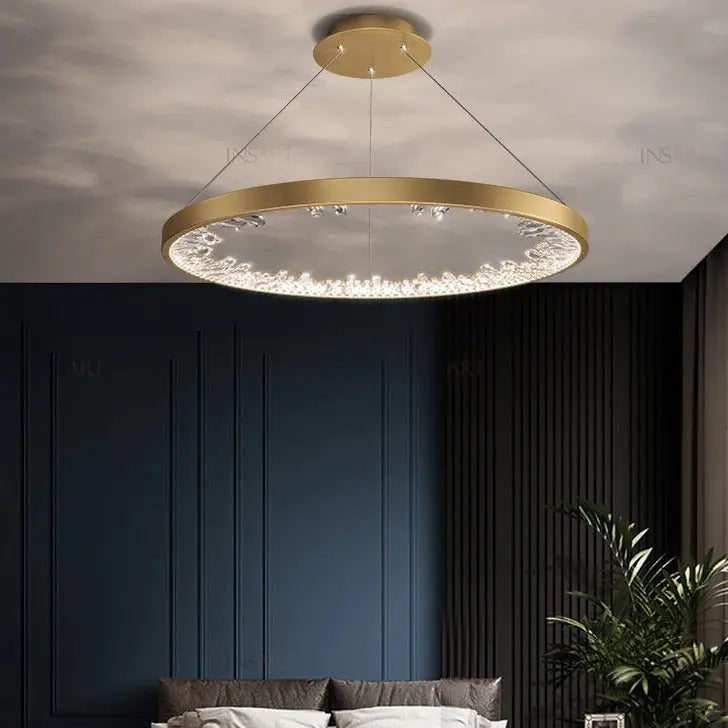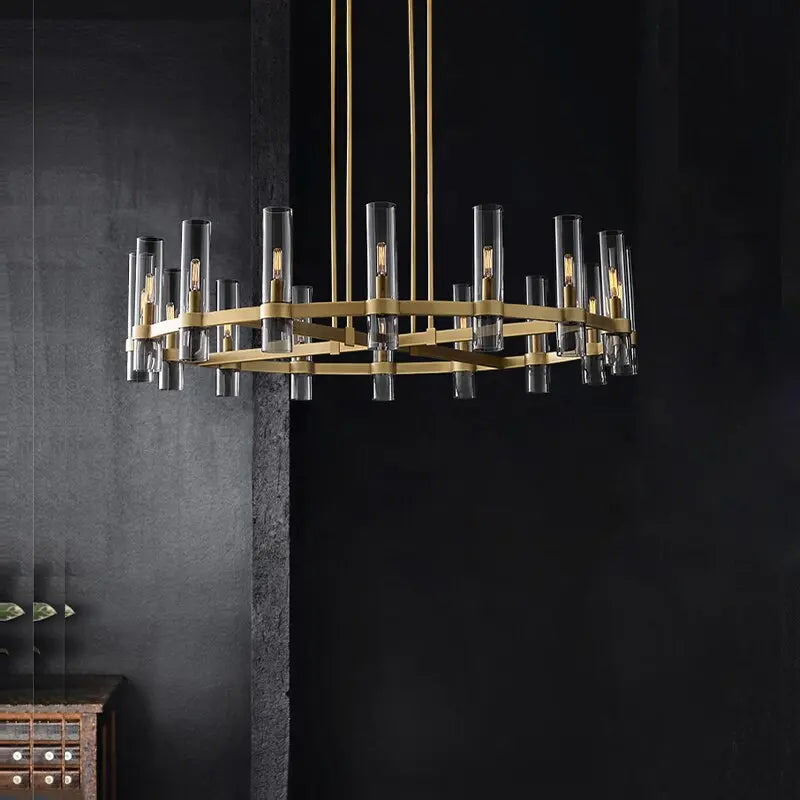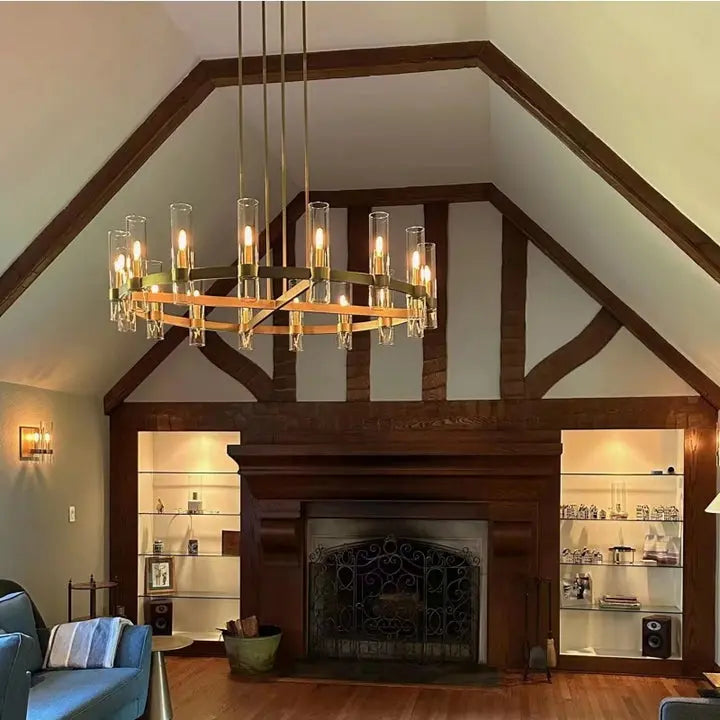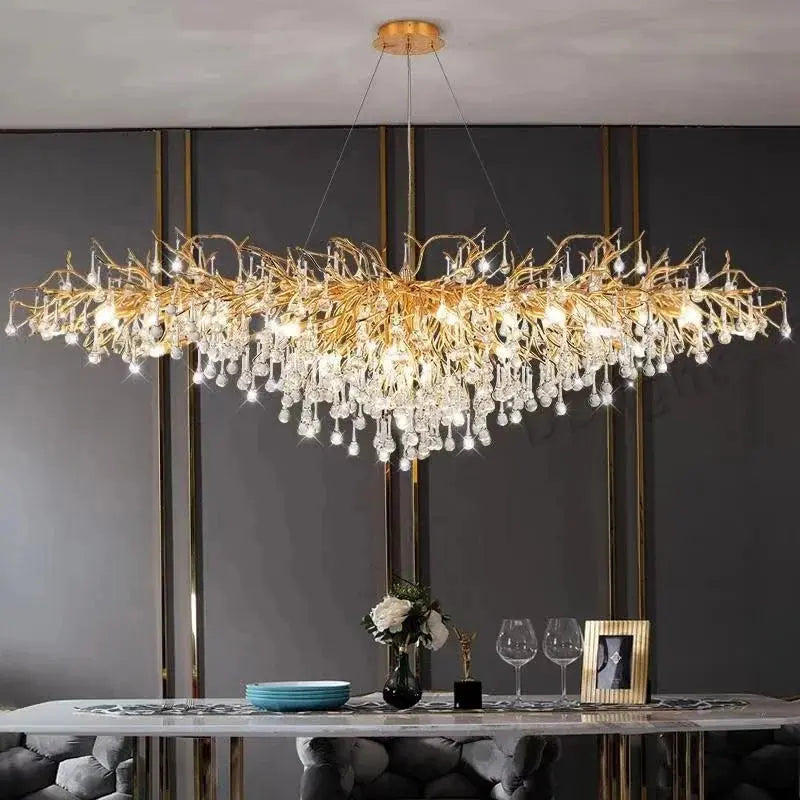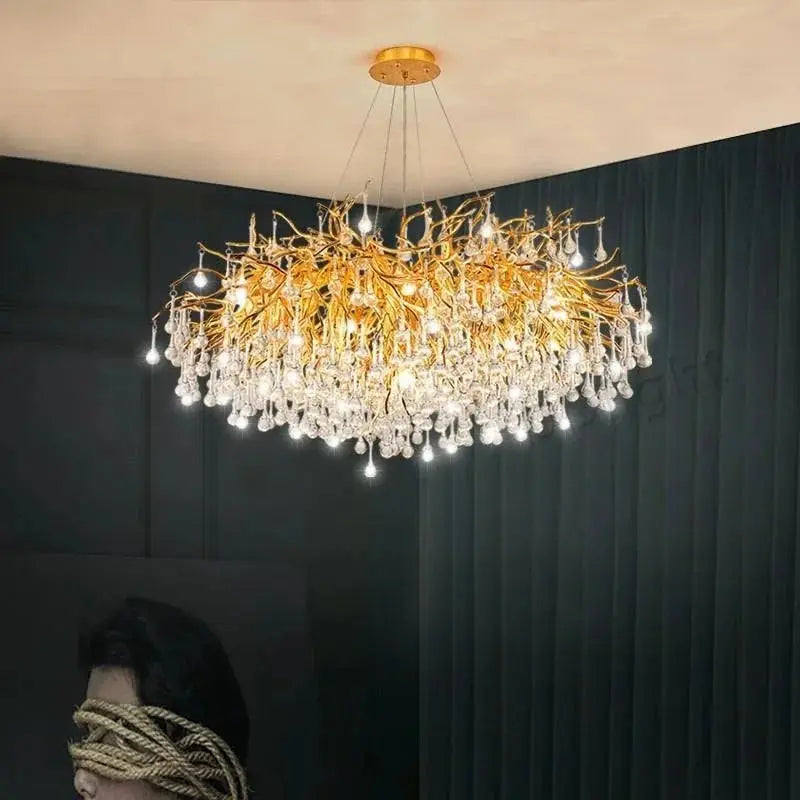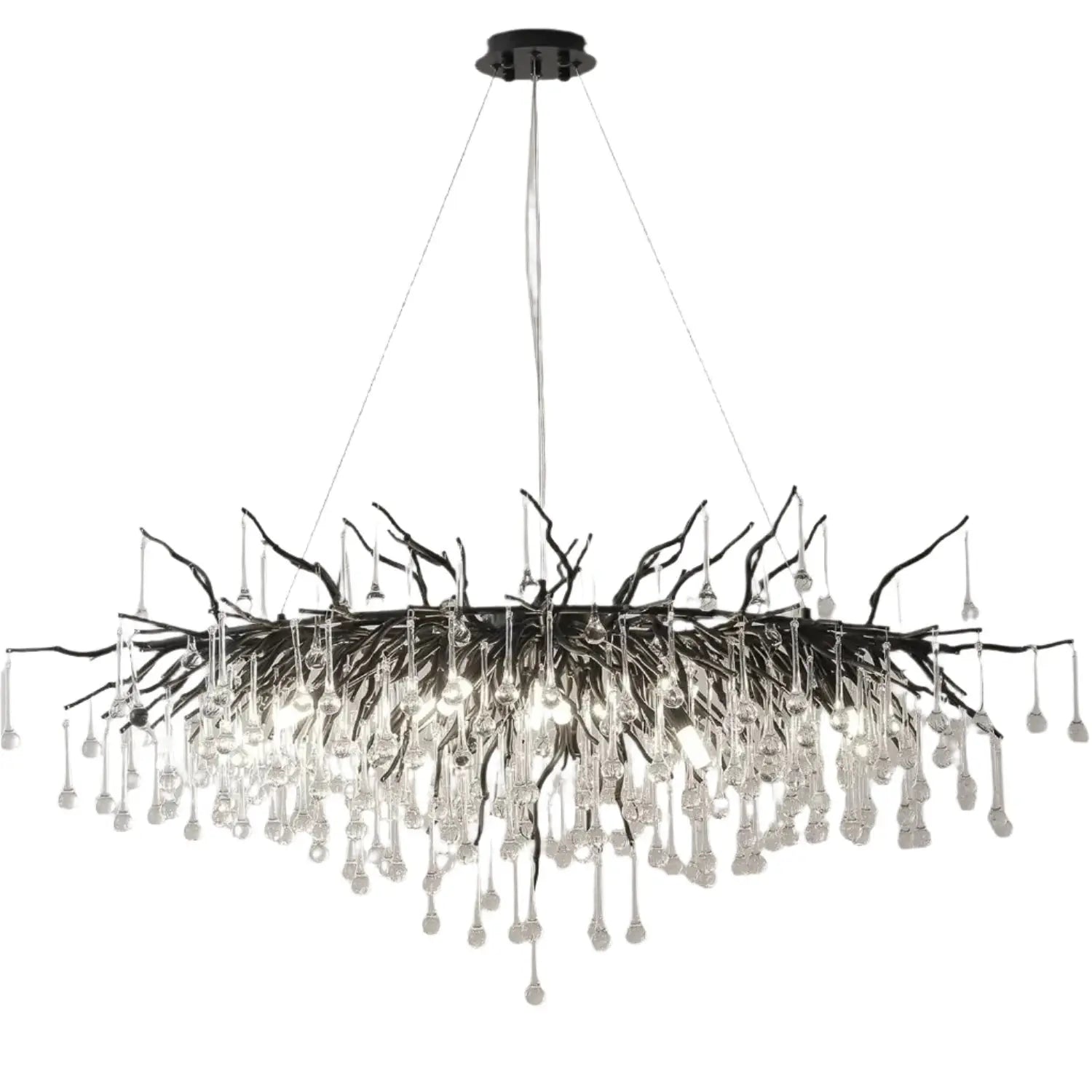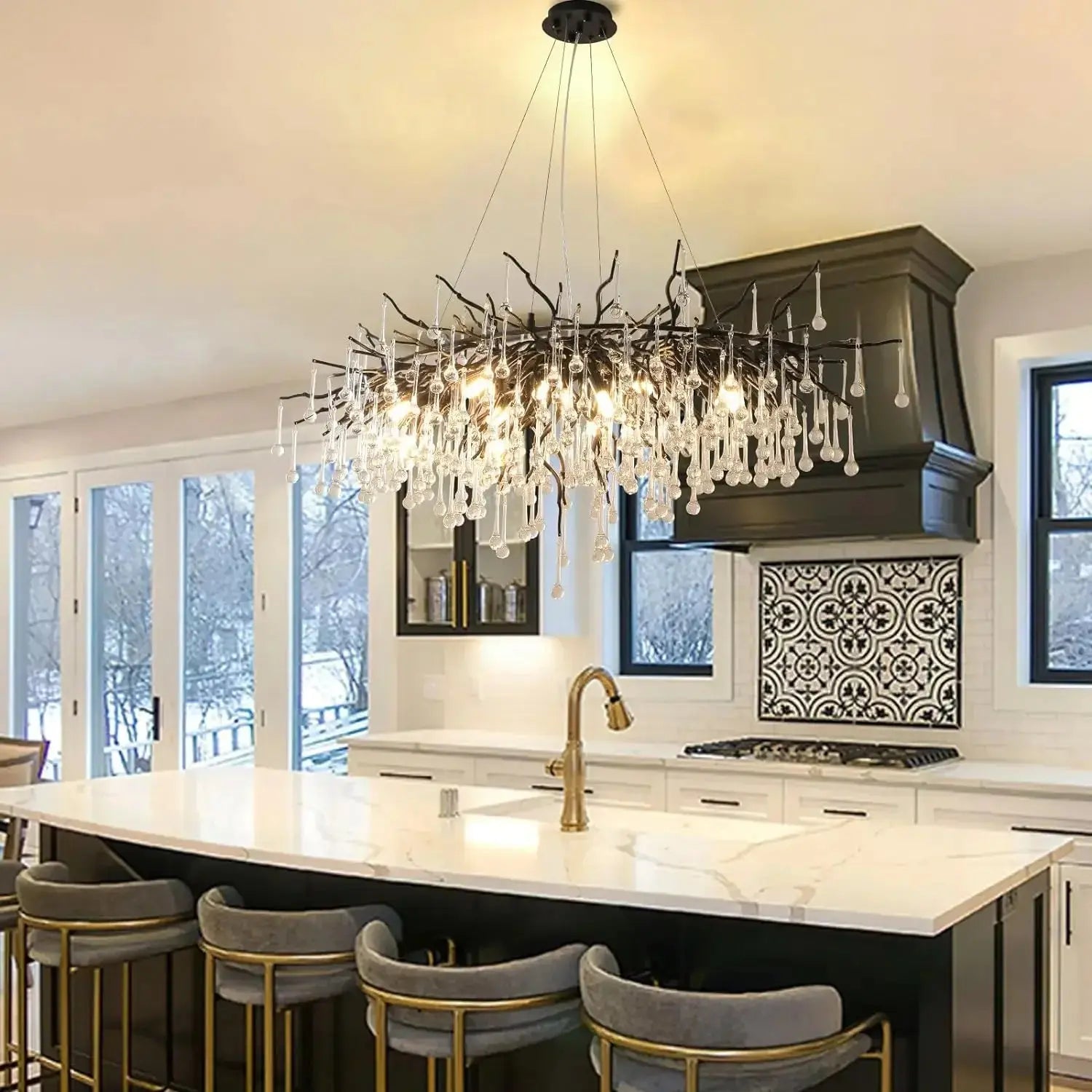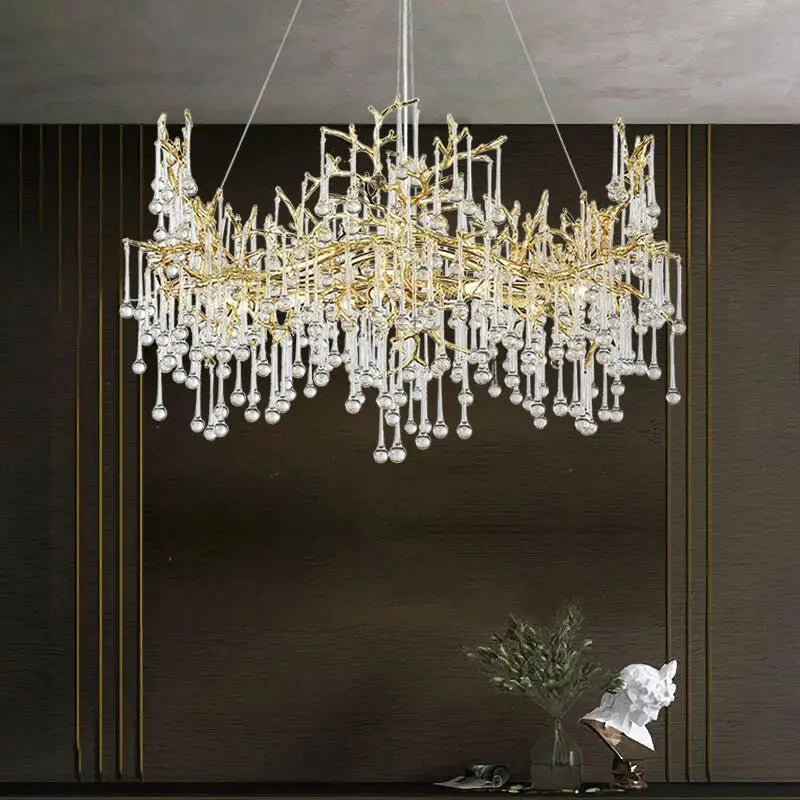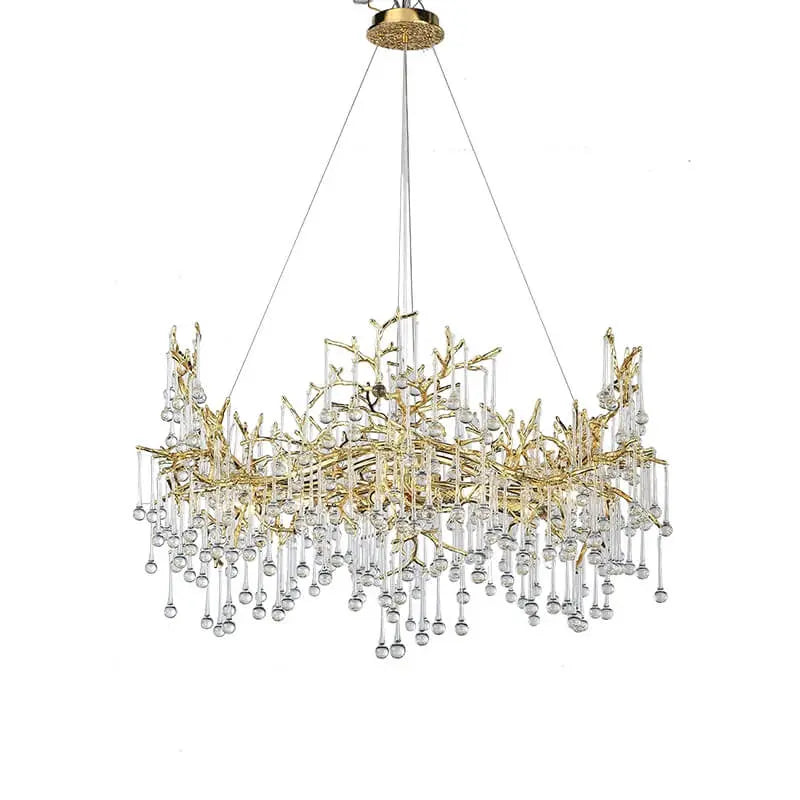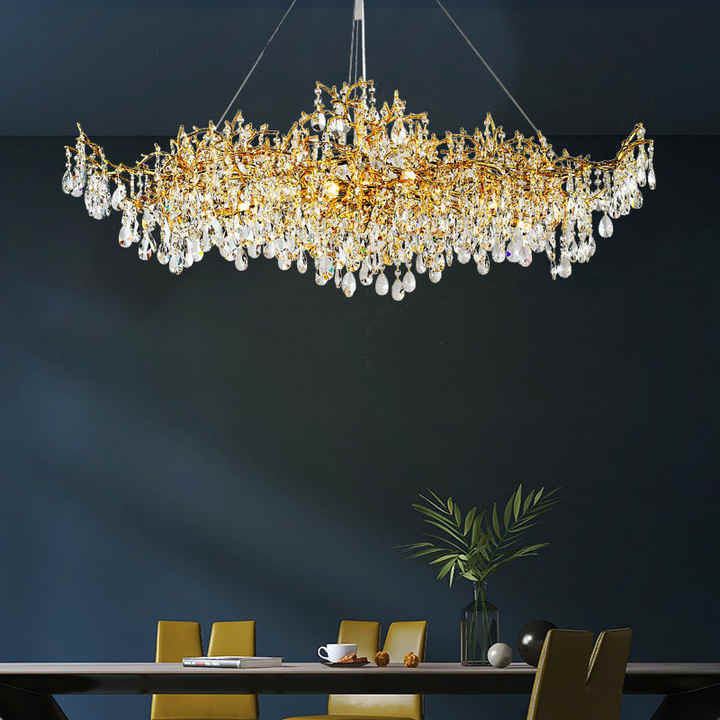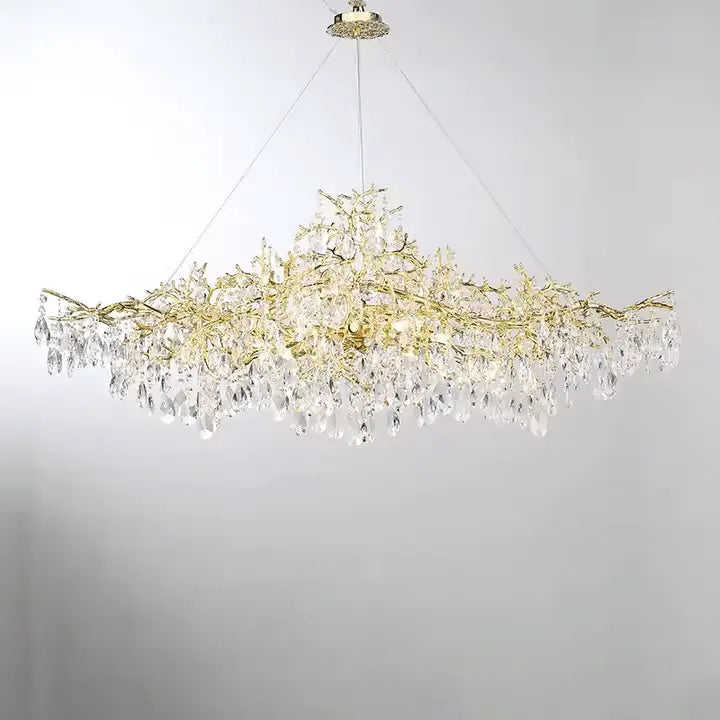The kitchen is often called the heart of the home, and the right kitchen island chandelier can really make it shine. Whether you're aiming for a classic look or something more modern, the chandelier you choose can add both style and function to your space. From sleek pendants to bold designs, there's a lot to consider when picking the perfect light for your kitchen island. Let's explore the ins and outs of choosing the right chandelier to illuminate your cooking space.
Key Takeaways
- Select a kitchen island chandelier that matches your kitchen's style.
- Measure your island and ceiling height to find the right size chandelier.
- Consider materials like metal, glass, and wood for your chandelier.
- Ensure your lighting provides adequate task lighting and ambiance.
- Explore smart lighting options for added convenience and efficiency.
Understanding Kitchen Island Chandelier Styles
Choosing a kitchen island chandelier is more than just picking a light; it's about setting the mood and style for your entire kitchen. There are so many options, it can feel overwhelming! Let's break down some popular styles to help you find the perfect fit.
Traditional Elegance
Traditional chandeliers bring a sense of timeless sophistication to your kitchen. Think ornate details, curved arms, and maybe even some crystals. These chandeliers often feature warm metallic finishes like bronze or brass, adding a touch of luxury. They work especially well in kitchens with classic cabinetry and detailed moldings. A traditional chandelier can really elevate the space.
- Ornate details and curved arms
- Warm metallic finishes like bronze or brass
- Ideal for kitchens with classic cabinetry
Modern Minimalism
For a sleek and uncluttered look, modern minimalist chandeliers are the way to go. These fixtures emphasize clean lines, geometric shapes, and simple materials like metal and glass. They often feature a single pendant or a series of smaller pendants arranged in a linear fashion. Modern chandeliers are perfect for kitchens with a contemporary design and a focus on functionality. Consider sleek modern designs to complement your kitchen's aesthetic.
Industrial Chic
If you're after a more edgy and urban vibe, an industrial chic chandelier might be just what you need. These chandeliers often incorporate exposed bulbs, metal cages, and raw materials like iron or steel. They can add a touch of ruggedness and character to your kitchen, especially when paired with concrete countertops or exposed brick. Industrial style is all about showcasing the raw beauty of materials.
Industrial chic chandeliers are a great way to add personality to your kitchen. They can be a real conversation starter and help to create a unique and inviting space.
Here's a quick comparison of the three styles:
| Style | Key Features | Best Suited For |
|---|---|---|
| Traditional | Ornate details, warm metals, curved arms | Classic kitchens with detailed cabinetry |
| Modern Minimalist | Clean lines, geometric shapes, simple materials | Contemporary kitchens with a focus on functionality |
| Industrial Chic | Exposed bulbs, metal cages, raw materials | Urban kitchens with concrete or exposed brick |
Assessing Size and Scale for Your Chandelier

Choosing the right size chandelier for your kitchen island is super important. You don't want something too big that overwhelms the space, or too small that it looks insignificant. It's all about finding that sweet spot where it complements the island and the overall kitchen design.
Measuring Your Kitchen Island
First things first, grab a measuring tape! Accurately measure the length and width of your kitchen island. This is the foundation for determining the ideal chandelier size. A common guideline is to select a chandelier that's approximately one-third the width of your island. This helps ensure a balanced and visually appealing look. For example:
| Island Width (Inches) | Recommended Chandelier Width (Inches) |
| 36 | 12 |
| 48 | 16 |
| 60 | 20 |
Ceiling Height Considerations
Ceiling height plays a big role in how a chandelier looks and functions. You need enough clearance so people don't bump their heads! A good rule of thumb is to hang the chandelier about 30-36 inches above the kitchen island surface if you have standard 8-foot ceilings. If your ceilings are higher, you can raise the chandelier a bit more. Adjustable height chandeliers are a great option, giving you flexibility during installation.
Proportional Design
Beyond just measurements, think about the overall proportions. A long, narrow island might look best with a linear chandelier or a series of smaller pendants. A square island could handle a more circular or geometric design. Consider the kitchen's design and how the chandelier will fit in. Here are some things to keep in mind:
- Consider the height of people using the island.
- Think about the visual weight of the chandelier – a very ornate chandelier might need more space around it.
- Make sure the chandelier doesn't block views or interfere with cabinet doors.
Getting the size and scale right can make or break the entire look of your kitchen. It's worth taking the time to measure carefully and consider all the factors before making a purchase. A well-proportioned chandelier will not only provide adequate lighting but also enhance the overall aesthetic of your kitchen space.
Choosing the Right Material for Your Chandelier
Choosing the right material for your kitchen island chandelier is a big deal. It's not just about looks; it's about durability, maintenance, and how well the material complements your kitchen's overall design. You want something that not only looks great but also stands up to the daily wear and tear of kitchen life. Let's explore chandelier shades.
Metal Finishes
Metal finishes are super popular for kitchen island chandeliers, and for good reason. They're durable, easy to clean, and come in a ton of different styles. You've got your classic options like brushed nickel and polished chrome, which are great for modern kitchens. Then there are warmer tones like bronze and brass, which can add a touch of rustic charm. The key is to pick a finish that complements your existing hardware and appliances.
Here's a quick rundown:
- Brushed Nickel: A soft, muted finish that hides fingerprints well.
- Polished Chrome: A shiny, reflective finish that adds a touch of glam.
- Bronze: A warm, rich finish that works well in traditional kitchens.
- Brass: A classic finish that can be either polished or antiqued.
Glass Options
Glass is another fantastic material for kitchen island chandeliers. It can add a touch of elegance and sophistication to your space. Plus, it comes in a variety of styles, from clear glass to frosted glass to colored glass. Clear glass is great for maximizing light output, while frosted glass can diffuse the light and create a softer ambiance. Colored glass can add a pop of personality to your kitchen.
Consider these glass types:
- Clear Glass: Maximum light, shows off the bulbs.
- Frosted Glass: Diffused light, softer glow.
- Colored Glass: Adds personality, can affect light color.
Wood Accents
If you're looking to add some warmth and natural texture to your kitchen, consider a chandelier with wood accents. Wood can be used in a variety of ways, from the entire frame of the chandelier to just a few decorative elements. Reclaimed wood is a great option for adding a rustic touch, while lighter woods like maple and birch can create a more modern feel. Just be sure to choose a wood that's sealed and protected from moisture, since kitchens can get pretty humid.
Choosing the right material is about balancing aesthetics with practicality. Think about how the material will hold up over time, how easy it is to clean, and how well it fits with your overall kitchen design. Don't be afraid to mix and match materials to create a unique look that's all your own.
Lighting Functionality and Ambiance

Lighting isn't just about seeing; it's about feeling. The right kitchen island chandelier can dramatically change how you experience your kitchen, influencing everything from your ability to prep food safely to the overall mood of the space. It's about finding that sweet spot where practicality meets atmosphere.
Task Lighting Needs
Let's be real, the kitchen island is a workhorse. It's where you chop veggies, roll out dough, and maybe even help the kids with homework. That means you need light that's bright enough to see what you're doing. Think about the kind of tasks you typically do at your island and choose a chandelier that provides adequate illumination. A single pendant might look cool, but will it really light up the whole surface? Probably not. Consider these points:
- Brightness Matters: Don't skimp on lumens. You want enough light to avoid straining your eyes.
- Placement is Key: Make sure the light is positioned to minimize shadows. Nobody wants to chop onions in the dark.
- Consider Multiple Fixtures: Sometimes, one chandelier isn't enough. Multiple pendants or a linear chandelier can provide more even lighting.
Dimming Features
Now, let's talk about mood. You don't always need bright, task-oriented lighting. Sometimes, you want to create a more relaxed atmosphere, especially if your kitchen island doubles as a dining area. That's where dimming features come in. Being able to adjust the brightness of your chandelier is a game-changer. It allows you to transition from bright, functional lighting to soft, ambient lighting with ease. Here's why dimming is awesome:
- Set the Mood: Dim the lights for a romantic dinner or a casual get-together.
- Save Energy: Lowering the brightness reduces energy consumption.
- Extend Bulb Life: Dimmable bulbs often last longer when dimmed.
Layering Light Sources
The best kitchen lighting schemes involve layering different types of light. Your island chandelier shouldn't be the only light source in the kitchen. Think about combining it with recessed lighting, under-cabinet lights, and maybe even some accent lighting to create a well-balanced and visually appealing space. This approach ensures that you have the right amount of light for every situation, from cooking to entertaining.
- Ambient Lighting: Provides overall illumination for the kitchen.
- Task Lighting: Focuses on specific work areas, like the island.
- Accent Lighting: Highlights architectural features or decorative elements.
Layering light sources is like creating a symphony of light. Each type of light plays a different role, and when combined, they create a harmonious and functional space. It's about understanding how different light sources interact with each other and using them to create the perfect ambiance.
Don't forget to consider living room lighting ideas to complement your kitchen's overall design.
Incorporating Color and Texture
Choosing a kitchen island chandelier isn't just about light; it's about adding personality and flair to your space. Color and texture can dramatically change the feel of your kitchen, turning a functional area into a design statement. Let's explore how to use these elements effectively.
Bold Color Choices
Don't be afraid to make a statement! A brightly colored chandelier can act as a focal point, especially in a kitchen with neutral tones. Consider these points:
- Contrast is key: A vibrant chandelier can pop against a muted backdrop.
- Coordinate with accents: Pull colors from your existing decor, like kitchen appliances or backsplash, to create a cohesive look.
- Consider the mood: Warm colors (reds, oranges, yellows) create a cozy atmosphere, while cool colors (blues, greens, purples) offer a calming effect.
Textured Finishes
Texture adds depth and visual interest to your kitchen. Think beyond smooth, polished surfaces. Here's how to incorporate texture:
- Woven materials: Rattan or wicker chandeliers bring a natural, rustic touch.
- Hammered metal: Adds an industrial or vintage vibe.
- Distressed finishes: Create a charming, aged look.
Texture can also play with light, creating interesting shadows and reflections. It's a great way to add a subtle layer of complexity to your kitchen design.
Complementary Color Schemes
If bold colors aren't your style, opt for a complementary color scheme. This involves choosing colors that are opposite each other on the color wheel. Some ideas:
- Blue and orange: A classic combination that creates a balanced and inviting space.
- Green and red: Use muted tones to avoid a Christmas-y feel.
- Yellow and purple: A playful and energetic combination.
Remember to consider the undertones of your existing kitchen elements when selecting a complementary color scheme. This will ensure a harmonious and visually appealing result.
Smart Technology in Kitchen Island Lighting
Smart Bulbs and Controls
Smart bulbs have really changed how we think about lighting. Imagine being able to adjust the brightness and color of your kitchen island lights with just your voice or a tap on your smartphone. It's not just about convenience; it's about creating the perfect atmosphere for any occasion. You can set up different lighting scenes for cooking, dining, or just relaxing. Plus, you can schedule your lights to turn on and off automatically, which is great for saving energy and adding a bit of security when you're away.
- Voice control via smart home technology assistants like Alexa or Google Assistant.
- Smartphone app control for dimming, color changes, and scheduling.
- Customizable lighting scenes for different activities.
Integration with Home Systems
Integrating your kitchen island lighting with your existing home systems can make your life a lot easier. You can connect your lights to your security system, so they turn on automatically if there's an alarm. Or, you can link them to your music system, so the lights change color in sync with the music. It's all about creating a seamless and personalized experience. This level of integration gives you even more control and makes your kitchen a truly smart space.
Energy Efficiency Benefits
Switching to smart lighting can also save you money on your energy bill. LED energy-efficient lighting options use significantly less energy than traditional bulbs, and they last much longer. Plus, with smart controls, you can easily dim your lights or turn them off when you don't need them. Many smart bulbs also have energy monitoring features, so you can track your energy usage and make adjustments to save even more. It's a win-win for your wallet and the environment.
Smart lighting isn't just a fancy gadget; it's a practical way to improve your home's functionality and efficiency. By integrating smart bulbs and controls, you can create a more comfortable, convenient, and sustainable kitchen space.
Installation Tips for Your Kitchen Island Chandelier
It's exciting to finally get to the installation phase! But before you start drilling, let's talk about making sure your new kitchen island lighting is installed safely and looks fantastic. It's more than just hanging a light; it's about ensuring it's secure, properly wired, and positioned for the best possible light.
Professional Installation Advice
While DIY projects can be tempting, electrical work is best left to the pros. A qualified electrician can handle the wiring, check the load capacity of your circuit, and ensure everything is up to code. This is especially important if you're dealing with older wiring or aren't comfortable working with electricity. Plus, they can often spot potential problems you might miss, saving you headaches down the road. Think of it as an investment in your safety and the longevity of your new fixture.
DIY Considerations
If you're a seasoned DIYer with electrical experience, you might consider installing the chandelier yourself. However, proceed with caution! Always turn off the power at the breaker before starting any work. Double-check all wiring connections, and make sure the fixture is properly grounded. It's also a good idea to have a second person assist you, especially when lifting heavier chandeliers. And if you're even slightly unsure about something, don't hesitate to call a professional. Better safe than sorry!
Here's a quick checklist for DIY installation:
- Turn off the power at the breaker.
- Test the wires to ensure no power is running through them.
- Carefully follow the manufacturer's instructions.
- Double-check all connections.
- Ensure the fixture is securely mounted.
Placement for Optimal Lighting
Where you hang your chandelier is just as important as how you hang it. The goal is to provide even, balanced light across your entire kitchen island. A good rule of thumb is to hang the chandelier about 30-36 inches above the island countertop. This height provides ample light without obstructing views or getting in the way. For taller ceilings, you might consider hanging it a bit higher. Also, make sure the chandelier is centered over the island for a balanced look. If you have a particularly long island, you might even consider using two smaller chandeliers instead of one large one.
Getting the height right is key. Too low, and it's in your face. Too high, and it doesn't do its job. Take the time to measure and adjust until it feels just right. It makes a world of difference.
Final Thoughts on Your Kitchen Island Chandelier
In the end, picking the right chandelier for your kitchen island is about more than just lighting. It’s about making your kitchen feel like home. Whether you want something sleek and modern or a bit more classic, there’s a perfect fit out there for you. Just keep in mind the size of your space and the vibe you want to create. Don’t hesitate to mix and match styles or even add some dimmers for those cozy dinners. With the right choice, your kitchen island can become a stunning centerpiece that combines both style and function.
Frequently Asked Questions
What is the best height for a kitchen island chandelier?
The ideal height for a kitchen island chandelier is usually between 30 to 36 inches above the countertop.
How many pendant lights should I use over my kitchen island?
The number of pendant lights depends on your island's size. Generally, one large pendant or three smaller ones work well.
Can I hang a chandelier over my kitchen island?
Yes, a chandelier can add style to your kitchen island, but make sure it matches the overall design of your kitchen.
What styles of chandeliers are popular for kitchen islands?
Popular styles include traditional, modern, and industrial designs, each offering a unique look and feel.
How do I choose the right size chandelier for my kitchen island?
Choose a chandelier that is about one-third to two-thirds the width of your kitchen island for balanced lighting.
What materials are best for kitchen island chandeliers?
Common materials include metal, glass, and wood. Each material can change the look and feel of your kitchen.


